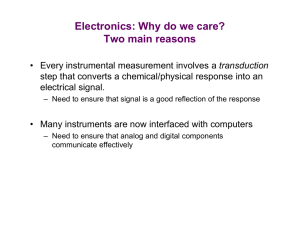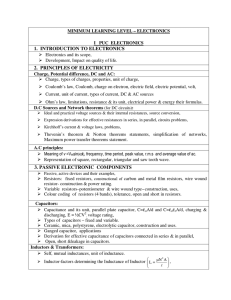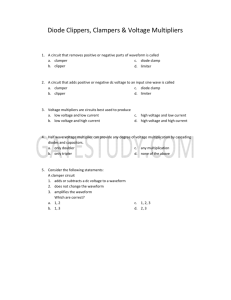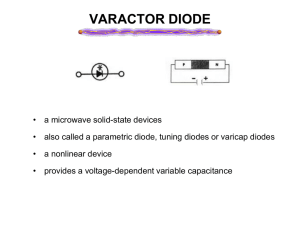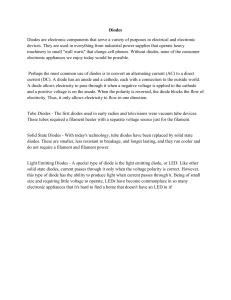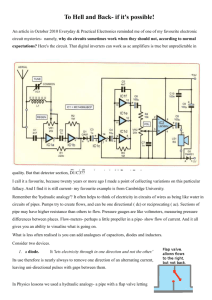Common circuit devices
advertisement
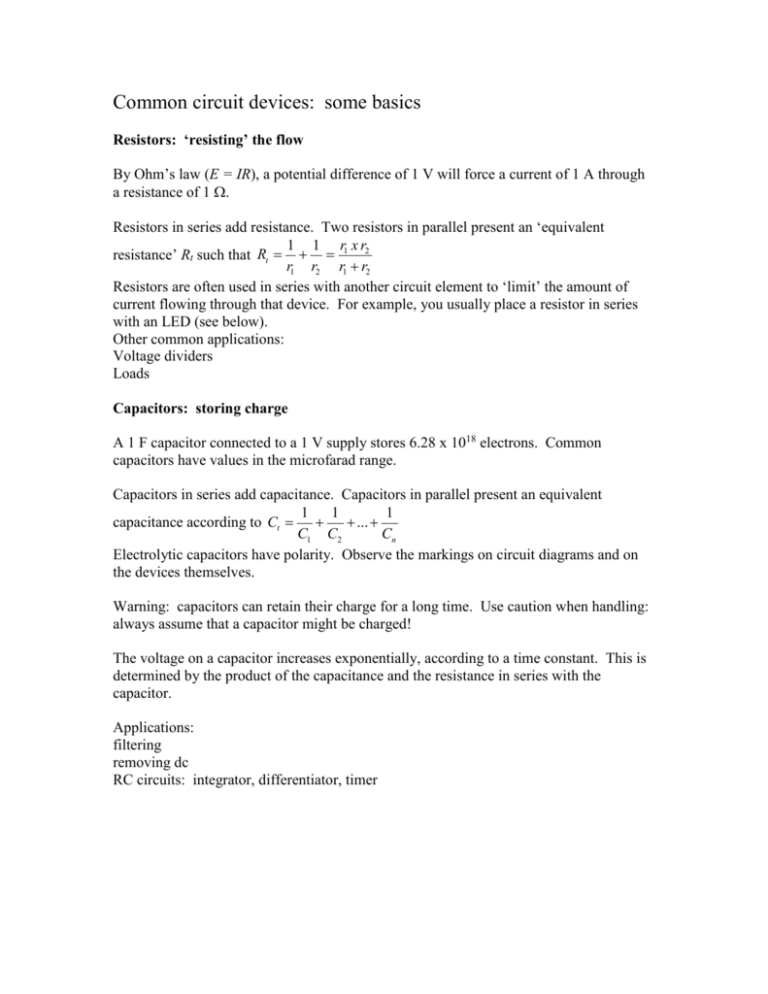
Common circuit devices: some basics Resistors: ‘resisting’ the flow By Ohm’s law (E = IR), a potential difference of 1 V will force a current of 1 A through a resistance of 1 . Resistors in series add resistance. Two resistors in parallel present an ‘equivalent 1 1 r xr resistance’ Rt such that Rt 1 2 r1 r2 r1 r2 Resistors are often used in series with another circuit element to ‘limit’ the amount of current flowing through that device. For example, you usually place a resistor in series with an LED (see below). Other common applications: Voltage dividers Loads Capacitors: storing charge A 1 F capacitor connected to a 1 V supply stores 6.28 x 1018 electrons. Common capacitors have values in the microfarad range. Capacitors in series add capacitance. Capacitors in parallel present an equivalent 1 1 1 ... capacitance according to Ct C1 C2 Cn Electrolytic capacitors have polarity. Observe the markings on circuit diagrams and on the devices themselves. Warning: capacitors can retain their charge for a long time. Use caution when handling: always assume that a capacitor might be charged! The voltage on a capacitor increases exponentially, according to a time constant. This is determined by the product of the capacitance and the resistance in series with the capacitor. Applications: filtering removing dc RC circuits: integrator, differentiator, timer Diodes and rectifiers: one way traffic! current These are semiconducting devices that allow current to pass in one direction only. It is important to note that a diode does not begin conducting until the forward voltage reaches a threshold value (for silicon diodes, 0.6 V; for germanium diodes 0.3 V). The diode therefore drops the applied voltage by the magnitude of this threshold. Diodes can be damaged if a voltage is applied in the nonconducting ‘reverse’ direction that exceeds a reverse threshold (Vr) or if the current in the forward conducting direction exceeds a breakdown value (If). voltage Diodes are used in many ways: LED’s (light emitting diodes) as pilot lamps or indicators (note an LED does not ‘turn on’ if the applied voltage is less than its forward voltage (usually about 1.7 V). LED’s cannot handle much current and therefore need a limiting series resistor. Inexpensive voltage droppers, Voltage regulators, Protection from reverse polarity, Protection from transient ‘voltage spikes’, Waveform ‘clippers’ and most importantly as rectifiers. Diodes also can be combined into primitive logic gates.
